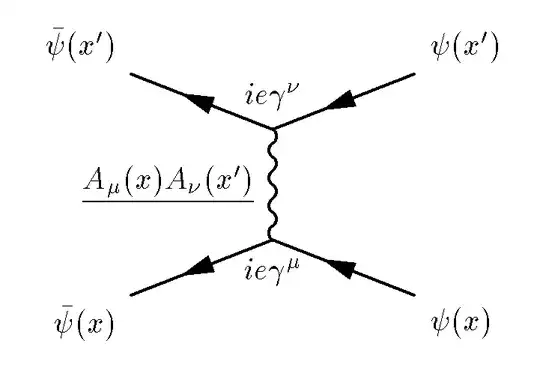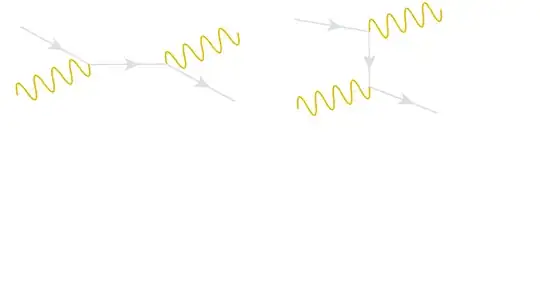if the interaction of two charged bodies is through the photon exchange: 1) how much is the energy of these photons and how do we calculate their energies? 2) can these photons be detected by a photon detector or simply as electromagnetic fields by a frequency in visual frequency range?
2 Answers
The interaction between two charged partices occurs through a change of momentum. All very well, but the next question is how we calculate the momentum exchange, and this is where quantum field theory comes in.
The interaction between two electrons is described as a disturbance in the quantum fields involved. Quantum field theory gives us an expression for calculating the interaction as a sum of terms. The first term, the tree level, is the interaction there would be if it was the exchange of a single photon. The next term is the interaction if a photon and an intermediate electron-positron pair were involved, and so on with higher terms involving more and more particles.
We call the particles in these terms virtual particles because their worldlines begin and end in the Feynmann diagram i.e. they don't exist outside the diagram. This is in contrast to the interacting particles, which come from (formally) an infinite distance away and escape to an infinite distance away.
The problem is that the virtual particles represent terms in an equation for the interaction. They are not, and should not be thought off as, real particles. Two interacting elecrons do not literally exchange a photon. They exchange energy and momentum through the quantum fields and this can be modelled by a sum of various particles.
So you cannot detect a virtual photon with your photon detector and measure its frequency because the virtual photon isn't really a photon.
If you're interested to learn more about this and are prepared to work at it then I strongly recommend Matt Strassler's blog article on the subject, as he puts things more elegantly than I can.
- 367,598
1) There exists the classical electromagnetic wave as described by Maxwell's equations.
2) The photoelectric effect showed that these electromagnetic waves are composed of photons, with energy E=h*nu , where nu is the frequency of the classical wave. Single photon experiments have been performed by limiting the intensity of the beam to one photon at the time.
3) Charged particles have an electric field associated with them both classically and quantum mechanically. Not a classical electromagnetic wave .
If the interaction of two charged bodies is through the virtual photon exchange:
Now we are coming to quantum mechanics and how to calculate an interaction between two charged bodies. This is done using Feynman diagrams, which are a shorthand that lead to a computational integral over the available phase space of the interaction.

The virtual photon mediating the interaction is the wiggly line in between the two vertices and it is off mass shell, because it will enter an integral over x and x': All the functions in the image shown are combined to get the scattering/interaction amplitude. So in a sense it is not one photon, virtual means it is a distribution that is represented by the term "virtual", and photon means that it has the quantum numbers of a photon, i.e. spin 1 .
How much is the energy of these virtual photons and how do we calculate their energies?
So the energy is within the limits of integration, variable. Only the input and output electron energies are real/measurable and known.
Can these virtual photons be detected by a photon detector or simply as electromagnetic fields by a frequency in visual frequency range?
From the above you see that the answer is no, they are not on mass shell and thus not real. Virtual photons are an integration tool, convenient for bookkeeping ( other virtual particles have many more and complicated quantum numbers that have to be conserved)
Edit after comment:
so can we say: when the charged particle is accelerating the photon can be detected and is real but when the charged particle is not accelerating the photon is not real and not detectable?!
There are two photon lines in this case, one virtual from the field providing the energy , and the other real and can be measured.

For the Feynman diagram on the left to represent the reaction of an electron to a field the time axis has to be taken as the +x direction, then the photon on the left provides the energy from the field and is off mass shell and the photon on the right is on mass shell and can be measured.
- 236,935